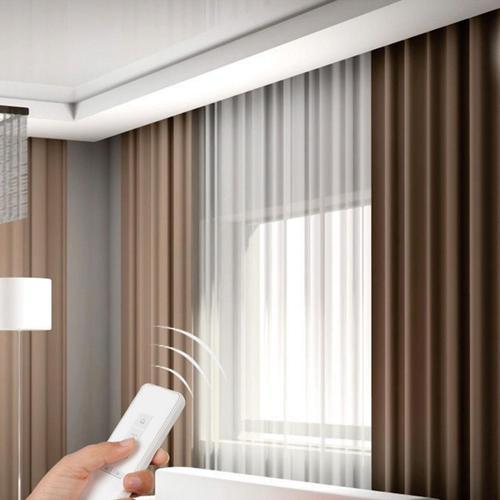In the era of smart homes, even our curtains can become intelligent and automated. Smart curtains offer convenience, energy efficiency, and enhanced privacy. This article explores the various benefits of smart curtains and provides insights into their installation techniques, allowing homeowners to transform their living spaces into technologically advanced havens.
The Advantages of Smart Curtains: Smart curtains bring numerous benefits to homeowners, making them an attractive addition to modern residences. Firstly, they offer convenience by allowing remote control or automation of curtain movement, eliminating the need to manually open and close them. Secondly, smart curtains contribute to energy efficiency by regulating natural light, thereby reducing the reliance on artificial lighting and minimizing heat gain or loss. Thirdly, these curtains enhance privacy by offering the flexibility to control visibility from outside. Lastly, smart curtains can be integrated into existing home automation systems, creating a synchronized and personalized environment.
Types of Smart Curtain Systems: When it comes to smart curtains, homeowners can choose from several different systems based on their preferences and requirements. The first type is motorized curtains, which feature an electric motor that allows automatic opening and closing using a remote control or smartphone app. Another option is sensor-based curtains, which utilize light or motion sensors to trigger curtain movement based on pre-set conditions.
These sensors can detect ambient light levels or occupancy in a room and adjust the curtains accordingly. Additionally, some smart curtains are equipped with voice control capabilities, enabling users to control them through voice commands using virtual assistants like Amazon Alexa or Google Assistant. Homeowners can select the system that aligns best with their lifestyle and the level of automation they desire.
Regular curtain cleaning ensures that they operate smoothly and remain free from dust and allergens. For professional curtain cleaning services, homeowners can rely on reputable curtain cleaning companies like those featured in this comprehensive guide here.
Installation Techniques: Installing smart curtains may vary depending on the chosen system and the existing window setup. Here are the general steps to follow:
- Measure and Select: Begin by measuring the dimensions of your windows to determine the appropriate curtain size. Consider factors such as fabric type, opacity, and color that suit your preference and the room’s decor.
- Mounting Mechanism: Choose the mounting method that aligns with your curtain rod and window frame. It can include wall or ceiling mounts, or track systems specifically designed for motorized curtains.
- Power Supply: Determine the power source for motorized smart curtains. Depending on the system, they may require a nearby power outlet, battery power, or rechargeable batteries. Ensure the chosen power supply aligns with your installation location.
- Wiring and Connectivity: If your smart curtain system requires wiring, follow the manufacturer’s instructions for cable routing and connection to the motor and control unit. For wireless systems, establish a stable connection with the accompanying hub or bridge.
- Testing and Configuration: After installation, perform a thorough test of the curtain’s movement and connectivity. Configure any accompanying smartphone apps or home automation systems to integrate the curtains seamlessly.
Smart curtains provide homeowners with an array of benefits, from convenience and energy efficiency to privacy and integration into smart home systems. By understanding the advantages of smart curtains and following appropriate installation techniques, homeowners can elevate their living spaces, creating a technologically advanced and comfortable environment.





